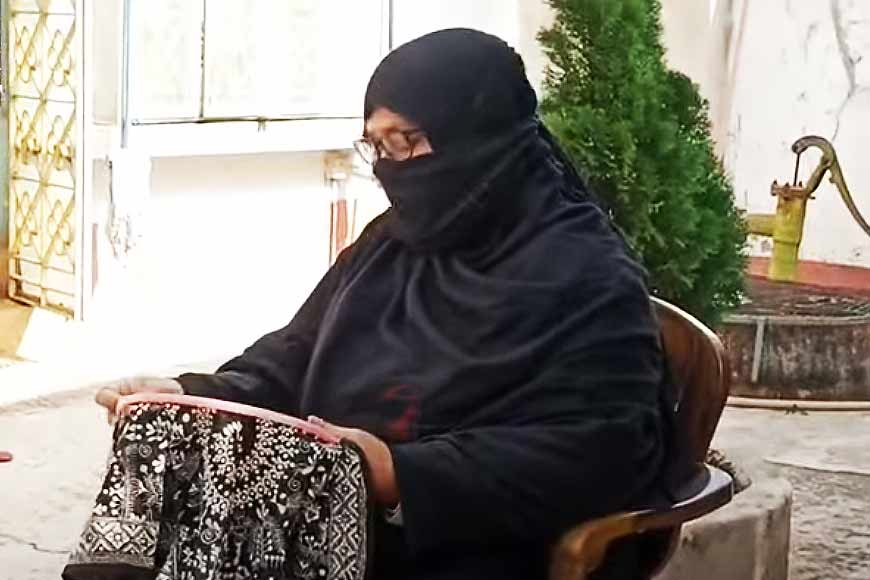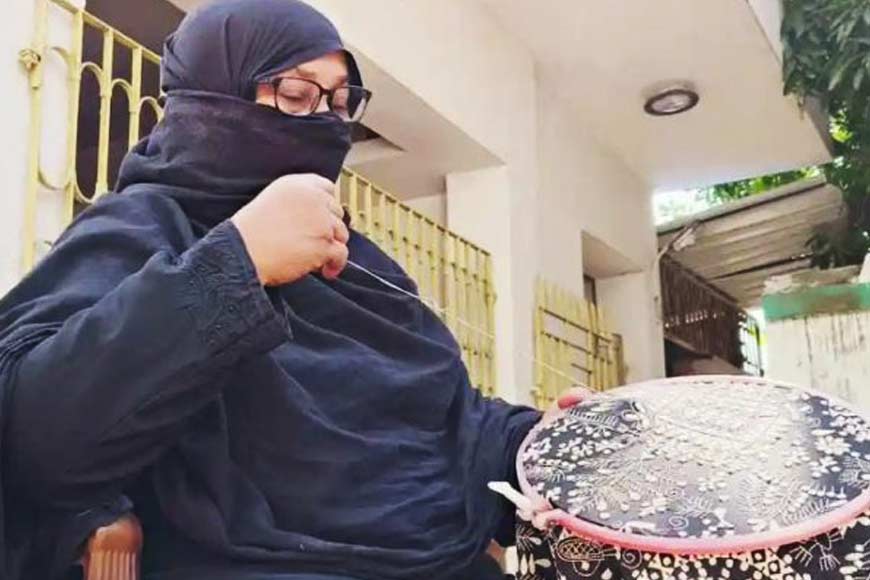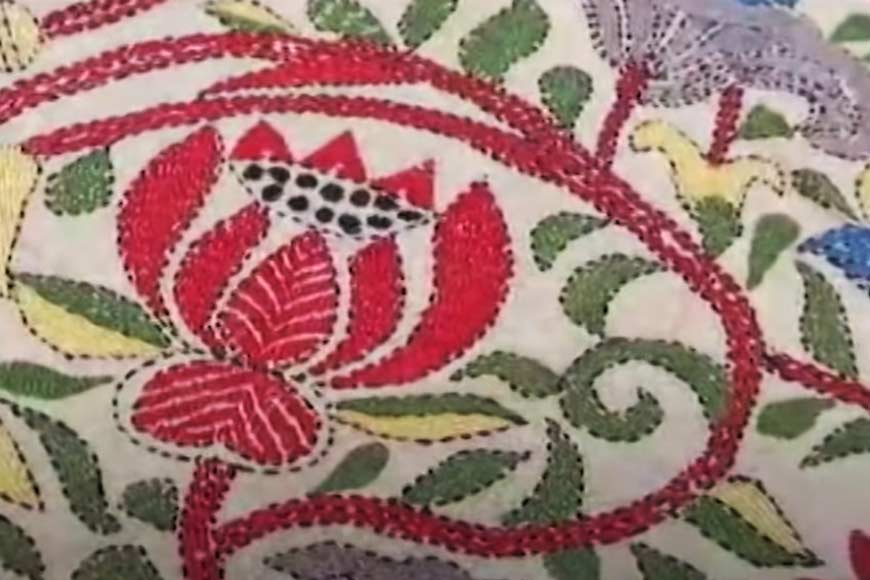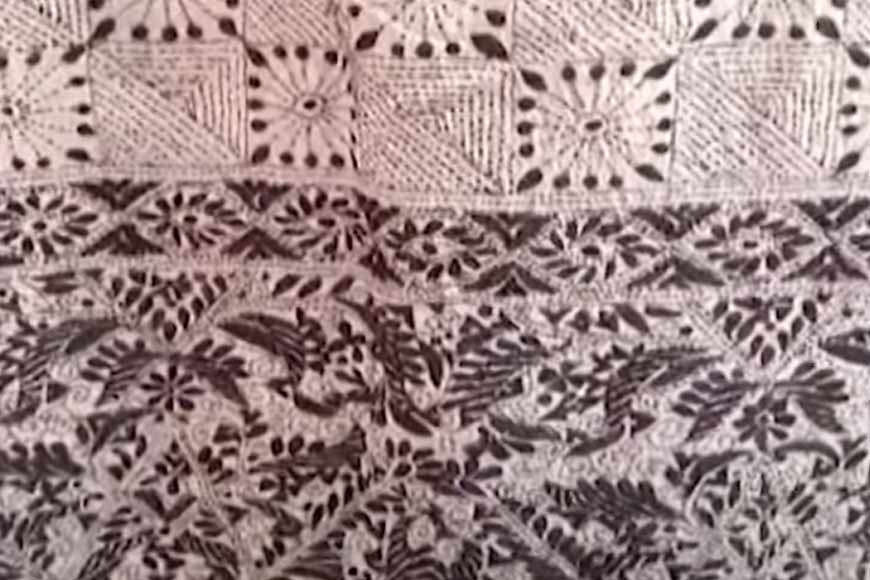Takdira Begum received Padma Shri for astonishing work on Nakshi Kantha stitches - GetBengal story

Padma Shri Takdira Begum, Birbhum
If poet Jasimuddin’s Nakshi Kanthar Maath depicted the love story of Shaju and Rupai, a different tale is crafted on the silk and tussar wonders of Bengal, be it a saree, or a blouse or a scarf --- the Nakshi Kantha stitches that bring to life an undying art form of Bengal. Now it gets further recognition through Takdira Begum, who received the Padma Shri this year for her astonishing work on Nakshi Kantha stitches which has fetched her fame far and wide. This 60-plus woman hailing from Bolpur of Birbhum is so unassuming in her looks, that no one will recognise how deftly her fingers work when she is deeply immersed in her craft of hand stitching some of the marvels that have travelled across the globe and brought fame to India. Takdira Begum is humble and unassuming, even after receiving multiple national awards, including Shilpa Guru Award in 2009 which was conferred on her as a master craftswoman for innovation in traditional craftsmanship, and recognising the highest level of aesthetic character, quality and skill.

And now she has received another national award, Padma Shri. When asked if she is happy, she gives a docile smile and nods her veiled head while concentrating on the designs that her needle etches on the clothes before her. Takdira’s life is a tale of struggle and resilience from the beginning and she is thus not just a craftsperson who is being awarded, rather she is an inspirational story to be heard and told far and wide, a story that can help uplift hundreds of hapless rural women of the minority community who are still married off very early in life and forced into domesticity despite their talents. Takdira was married at the age of 19 and soon she had three daughters. She was a victim of the patriarchal society, yet she kept her creative hunger alive and sought opportunities that could turn her dream into reality, she was also concerned about her daughters, whom she was raising with a dream to make them financially independent.
Takdira had one skill that she was proud of, her kantha embroidery skill. Many women of her village were deft in Kantha work, a tradition that was handed down through generations. Takdira’s grandmother and mother had made Kantha for their household use and passed the skills down to Takdira from when she was a young girl. “My mother could never even imagine of selling her work and earning, it was never allowed back then in our family. But she was a master stitcher and she taught me very rare and different designs. I wanted to thus use this embroidery on a bigger scale. I had dreams.” Takdira’s dreams opened up a new vista after she finished school and on her own was keen to learn different stitches, how to make new designs, and how to market her work. She joined an art school for 2 years.

Marriage and motherhood could not stop her dreams. Soon after marriage, she joined hands with a few younger girls in their mid-teens from around her village, trained them to improve their kantha skills, and then hired them to start making Kantha fabric for the local market. “I wanted to create something different on Kantha, not the usual ones we get in the market.” As a differentiator, Takdira chose elaborate and complex designs exclusively on hand-woven tussar silk, creating unique and high-end Nakshi Kantha products in the market. As saree exporter Sanvi Singh says: “Fine Nakshi Kantha is a rare art today, it originated in Bangladesh and was once very popular, but after Partition, it lost the master stitchers and went into oblivion. Now it is being revived and thanks to artists like Takdira, the art is still alive because it is an art form that is passed down generations and not taught in any school. It requires not just skill, but a lot of patience. A Nakshi Kantha saree or dress material might need around 6 months to be made and hence they are priced high ranging from 15,000- 25,0000.”
Takdira’s journey into making a sort of Kantha cooperative in her village was not a cakewalk for her. “Even if most girls were willing to join and become financially independent, their husbands refused to send them to my place or even leave their homes and come out and work. However, my husband helped me a lot and encouraged his friends too so that they like him would send their wives.” Local women started approaching Takdira to ask for work. Today, her community efforts have paid off well, her group now consists of over 100 women from 18-70 years. They make ‘simple’ Nakshi Kantha on running yardage fabric and also elaborate work on scarves and wraps. One of her daughters Runa Laila has also been stitching kantha since her teenage years, learning from her mother. She has brought in fresh ideas and designs, being the younger one and has joined Takdira’s Kantha craft full time. “I love creating new patterns and designs for the artisans to embroider. I met so many different people while taking this art throughout India,” said Runa.

The recognition that Takdira receives through one of the highest civilian awards of India is not just because she has kept the Nakshi Kantha, a dying art form of Bengal alive, but because she has revitalized the art and made women of her community self-reliant. The artisans pick the fabric from Takdira and take it home to work. This helps the women to work at their convenient time and earn good money to support their families and pass on this art form to the next generation. Her 30-35-year journey to empower rural women met with several challenges but did not go in vain. Rather she has set an example of how even the marginalised women from the minority community in India can also leave behind an artistic legacy that also feeds mouths.











